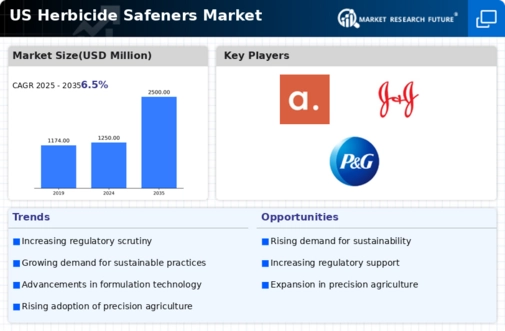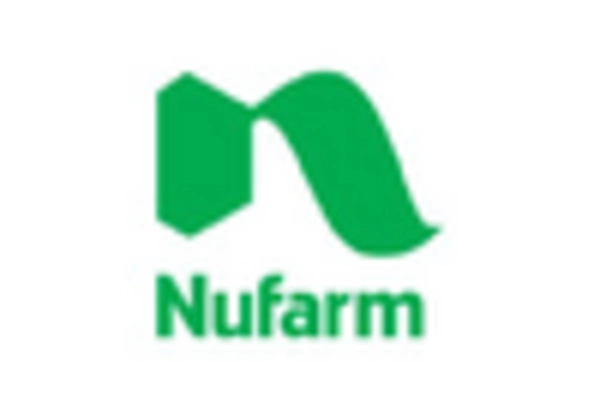Regulatory Changes Favoring Safener Use
The herbicide safeners market is likely to be positively impacted by regulatory changes that favor the use of safeners in agricultural practices. As regulatory bodies in the US continue to emphasize the importance of safety and efficacy in herbicide applications, the approval and registration of new safeners are expected to increase. This regulatory support is crucial for the herbicide safeners market, as it encourages manufacturers to invest in research and development. In 2025, the market is projected to grow by approximately 4% due to these favorable regulatory conditions. The alignment of regulatory frameworks with the industry's objectives may lead to enhanced product offerings and increased adoption among farmers.
Growing Awareness of Herbicide Resistance
The herbicide safeners market is experiencing growth driven by the increasing awareness of herbicide resistance among farmers. As resistance to commonly used herbicides becomes more prevalent, the need for effective management strategies is paramount. Herbicide safeners can play a critical role in protecting crops from injury while allowing for the use of herbicides that may otherwise cause damage. This awareness is likely to lead to a shift in purchasing behavior, with farmers seeking safeners as part of their integrated pest management strategies. By 2025, the herbicide safeners market is expected to expand, with a projected market size of approximately $1.4 billion, reflecting a growing recognition of the importance of safeners in combating herbicide resistance.
Advancements in Agricultural Biotechnology
The herbicide safeners market is benefiting from advancements in agricultural biotechnology, which are enabling the development of more effective and targeted safeners. Innovations in genetic engineering and molecular biology are leading to the creation of crops that are more resilient to herbicide applications. This technological progress is expected to drive the market forward, as farmers increasingly adopt biotech crops that require safeners for optimal performance. By 2025, the herbicide safeners market could see a surge in demand, with projections indicating a market value of around $1.8 billion. The integration of biotechnology in agriculture not only enhances crop protection but also aligns with the industry's goals of improving yield and sustainability.
Rising Demand for Crop Protection Solutions
The herbicide safeners market is experiencing a notable increase in demand for effective crop protection solutions. As agricultural practices evolve, farmers are seeking ways to enhance yield while minimizing crop damage from herbicides. This trend is driven by the need for sustainable farming practices that ensure food security. In 2025, the market for herbicide safeners is projected to reach approximately $1.5 billion in the US, reflecting a compound annual growth rate (CAGR) of around 5%. The growing awareness of the benefits of using safeners to protect sensitive crops from herbicide injury is likely to further propel market growth. Consequently, the herbicide safeners market is positioned to play a crucial role in meeting the agricultural sector's demands for safer and more efficient herbicide applications.
Increased Focus on Environmental Sustainability
The herbicide safeners market is significantly influenced by the increasing focus on environmental sustainability within the agricultural sector. Farmers and agricultural stakeholders are becoming more aware of the ecological impacts of herbicide use, leading to a shift towards safer alternatives. The adoption of herbicide safeners helps mitigate the adverse effects of herbicides on non-target crops and the surrounding environment. In 2025, it is estimated that the market will witness a growth rate of approximately 6% as more farmers prioritize sustainable practices. This trend indicates a growing recognition of the herbicide safeners market as a vital component in promoting environmentally responsible agriculture, thereby enhancing its appeal to both consumers and regulatory bodies.

















Leave a Comment